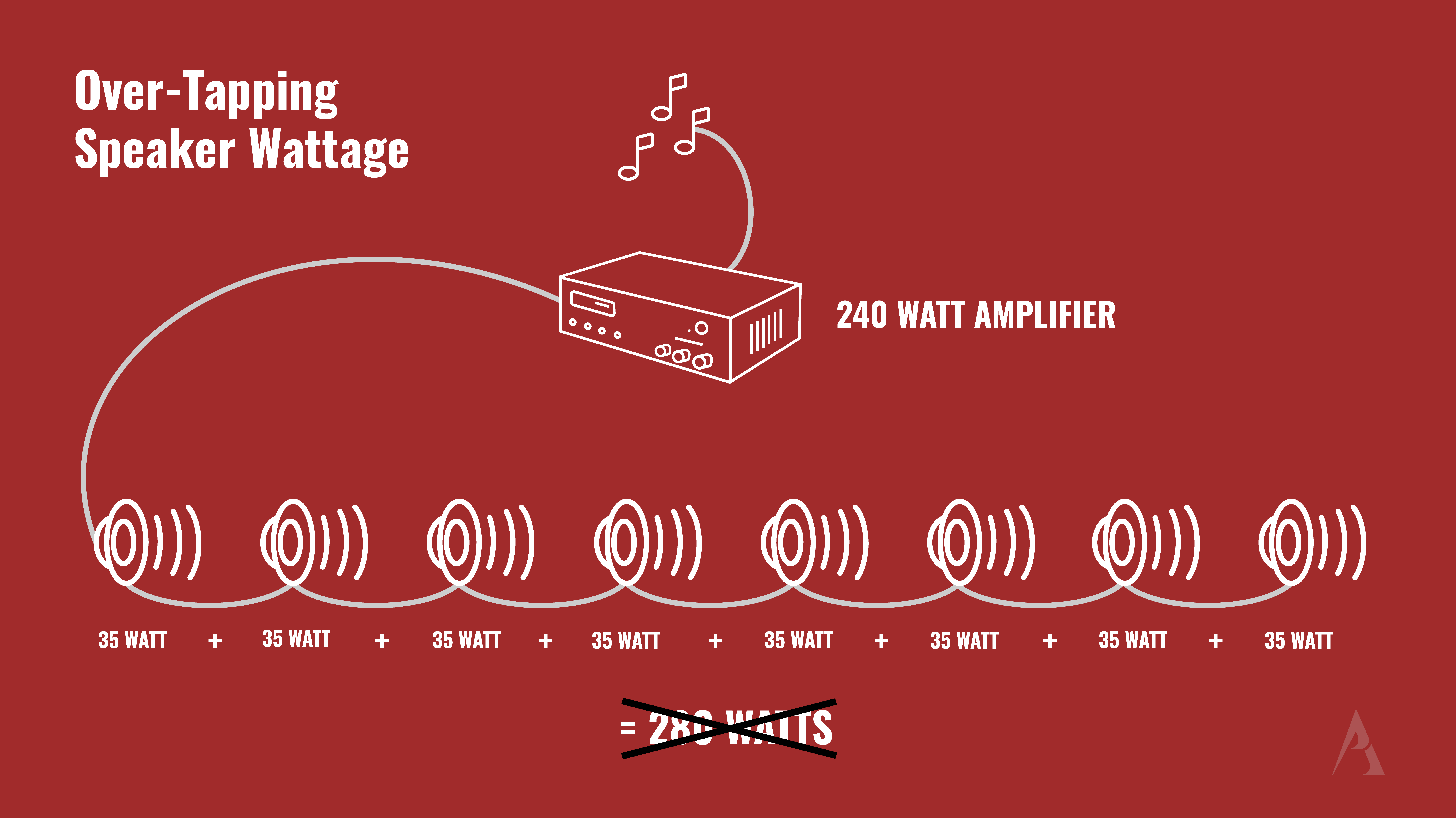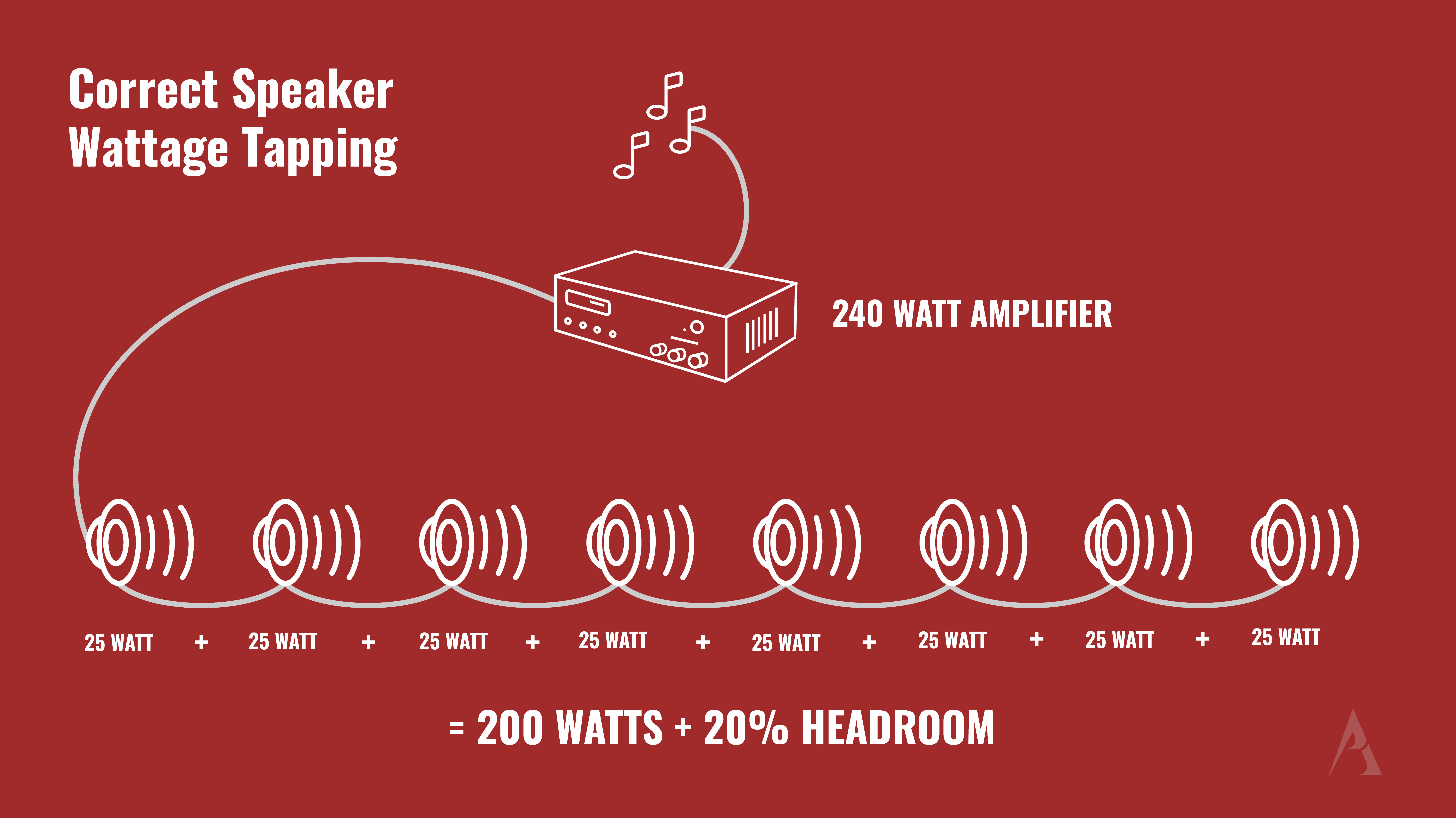One of the most important decisions in designing a commercial sound system is ensuring that you choose the right amplifier for your 70-volt speakers. Using the wrong amplifier can damage your equipment or reduce the performance of your entire system. When choosing a 70v power amplifier you’ll need to know how to match the amplifier and speaker power.
In this article, you’ll learn how to choose an amplifier for your speakers. We will also show you how to calculate how much amplifier power you’ll need for your specific 70-volt speaker system. When selecting the right distributed audio system amplifier, you will first need to know what an amplifier is and take into consideration things like 70v speaker transformer tap settings, headroom, and audio clipping and distortion.
So what is an amplifier for speakers and how does it work? An audio power amplifier is an electronic amplifier required to amplify the power of an input signal to a high enough level to drive your speakers. The 70v amplifier will take an audio signal and turn it into a wattage like an electrical signal which will then drive your speakers.
70-volt technology allows us to take multiple speakers and run one individual line at a fixed wattage and a constant voltage. All 70v speakers have a transformer built-in or mounted on the back. There will usually be a dial with a series of numbers on it, this is what is referred to as a “tap” or “tap setting”. The tap dial allows you to change how much wattage a particular speaker is going to draw. The 70-volt speaker wattage selector also determines how loud that speaker will be able to get. It’s very important if you're installing a commercial speaker system to determine what tap you're going to use and set this prior to installation.
What 70v speaker tap settings should you use?
In general, it’s normally a good rule of thumb to tap your speakers at the middle to highest wattage tap for the desired volume level of the application.
- This means that in businesses like a typical restaurant you normally don't need speakers with a high wattage. So if you've got a speaker that has a 200 Watt tap, you probably don't need it quite to full level. Therefore, that's not the “desired” tap setting.
- However, if you're doing a sports bar or higher energy restaurant you probably don’t want to start at the lowest wattage setting because it's not going to be very loud.
- When setting speaker taps, the total combined wattage should not exceed the total wattage output of the amplifier minus 20% headroom buffer space to avoid clipping.

What is headroom?
Headroom is the total combined speaker wattage that should not exceed the total wattage output of the 70v amplifier minus a minimum of 20%.
- The purpose of that headroom is to allow the amplifier to create the wattage needed to power all the speakers accounting for variation in signal without creating audio clipping.
- When you're listening to your favorite song, sometimes there are loud parts and sometimes there will be really quiet parts. That additional headroom means that it can take into consideration those jumps and drops in the music.
- If you’re using all of the amplifier’s power and there's no headroom there's not a lot of room for taking into consideration the variant ranges. This can lead to it trying to drive too much wattage which can push it into clipping
What is audio clipping?
Clipping is waveform distortion that occurs when an amplifier is overdriven and attempts to deliver an output wattage beyond its maximum capability.
- Normally this will be indicated with a clip light, a flashing red light, on the amplifier
- Clipping leads to choppy or distorted audio and over time that distortion can damage your speakers and cause pretty serious issues.
- We want to avoid clipping as much as possible.
How to calculate the needed amplifier power for your speakers
This is really just a fairly simple math equation. You want to add up your total 70 Volt speakers with their desired wattage tap settings and then ensure that number is not more than the amplifier is capable of producing.
- If you have two 25 watt speakers, 25 watts + 25 watts = 50 Watts + 20% headroom. 20% of 50 is 10 watts. 50 watts + 10 watts = 60 watts. So you’ll require at least a 60 Watt amplifier
- With a 240 Watt amplifier, you can do up to 8 of the same speakers. 8 speakers x 25 watts each = 200 Watts. That leaves a little headroom to play with underneath the 240 Watt max output.
What happens if you use an overpowered 70v audio amplifier?
The one thing you don't need to be concerned about with 70 Volt is having too large of an amplifier.
- You can tap a speaker at 1 Watt on a 240 Watt amplifier. That 70v transformer tap will determine that the speaker is only going to get 1 Watt. So even if you turn it up all the way, which we wouldn’t advise, you still won't overdrive or distort the speaker because it's only tapped at 1 Watt.
- Also, if you might want to add more speakers or a subwoofer down the road, with a 70v speaker system, as long as there is wattage leftover and plenty of headroom, you can add as many commercial speakers as you want.

What happens if you run out of wattage and want to add more speakers?
Should you find with an existing amplifier that you're out of wattage most amplifiers have either a line-level output or an audio output that you can take a feed out of that amplifier to feed another amplifier. And then start the whole process over again of how many speakers we need, what wattage we need, and what tap settings for our future speakers we're going to add to our 70v sound system.
Implementation of the correct amplifier is critical and often overlooked. For the best performance from your 70 Volt sound distribution system remember to choose a reliable amplifier that is capable of providing enough power to deliver the high-quality sound of your speakers while maintaining some extra headroom to avoid the tendency to overdrive the input of the amplifier.
If you have questions about how to choose an amplifier or how much amplifier power you need for speakers, give us a call at (888)-256-4112, or email us at [email protected].

